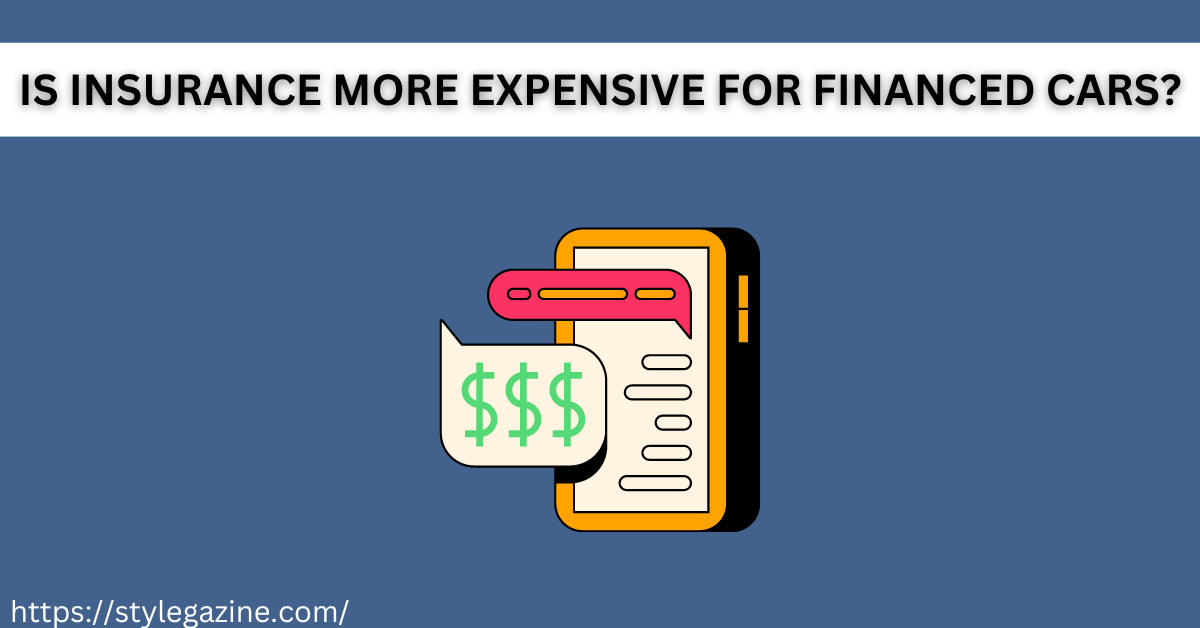Exploring the common belief that insurance costs are higher for financed cars opens a window into the complexities of the insurance industry. While conventional wisdom often suggests that financing a car automatically leads to higher insurance premiums, the reality is more nuanced. This article aims to unravel the factors influencing insurance costs for financed cars, providing clarity to help consumers make informed decisions.
Contrary to popular belief, financing does not inherently increase insurance premiums; instead, the lender’s requirements often impact insurance costs for financed cars. Most lenders mandate comprehensive and collision coverage for financed vehicles to protect their financial interest until the loan is repaid. These coverage types typically carry higher premiums than state-required liability coverage alone. Factors such as the vehicle’s value, the necessity of gap insurance, credit score, and driving history play significant roles in determining insurance premiums for financed cars.
Understanding these factors empowers consumers to explore strategies to mitigate insurance costs, such as shopping around for competitive rates, bundling policies, optimizing coverage, improving credit scores, and maintaining a clean driving record. By dispelling the misconception that financing invariably results in higher insurance premiums and providing actionable insights, this article equips consumers with the knowledge needed to navigate the complexities of insuring financed vehicles effectively.
Understanding Insurance Premiums
Before exploring the intricacies of financing, it’s essential to understand the core principles governing insurance premiums. Insurance premiums are determined by many factors, encompassing the vehicle’s make and model, the driver’s age and driving history, geographical location, coverage options, and the chosen deductible amount. Each of these elements plays a crucial role in assessing the level of risk associated with insuring a specific vehicle and driver. Insurance companies meticulously evaluate these factors to calculate premiums that adequately reflect the potential liabilities and expenses they may incur.

From the vehicle’s characteristics to the driving behavior and demographic profile of the insured individual, insurers analyze a comprehensive range of variables to establish appropriate pricing for insurance coverage. By comprehensively evaluating these factors, insurers strive to maintain a delicate balance between offering competitive premiums and ensuring sufficient coverage against potential risks. Therefore, before delving into discussions regarding financing and its potential impact on insurance costs, it’s imperative to have a solid understanding of how insurers assess risk and determine premiums based on various influencing factors.
Influence of Financing on Insurance Premiums
Contrary to popular belief, financing itself does not inherently increase insurance premiums. Instead, the lender’s requirements often impact insurance costs for financed cars. Most lenders mandate comprehensive and collision coverage for financed vehicles to protect their financial interest until the loan is repaid. These coverage types typically carry higher premiums than state-required liability coverage alone.
However, the decision to finance a vehicle does not directly influence insurance rates; rather, the lender’s insistence on certain coverage types may lead to increased premiums. Additionally, the value of the financed vehicle plays a significant role in determining insurance costs, as newer or more expensive cars generally incur higher premiums due to the potential repair or replacement costs.
Therefore, while financing may introduce specific insurance requirements, such as comprehensive and collision coverage, it’s not the act of financing itself but rather the associated conditions imposed by the lender that can result in higher insurance premiums for financed vehicles.
Factors Contributing to Insurance Costs for Financed Cars

- Comprehensive and Collision Coverage: Lenders necessitate comprehensive and collision coverage to safeguard against potential damages to the financed vehicle. Comprehensive coverage protects against non-collision incidents like theft, vandalism, or natural disasters, while collision coverage covers damage from collisions with other vehicles or objects.
- Vehicle Value: The vehicle’s value heavily influences the insurance cost. Financed cars, especially newer models or luxury vehicles, often have higher values, leading to increased insurance premiums to adequately cover potential repairs or replacements.
- Gap Insurance: Many lenders require borrowers to purchase gap insurance for financed cars. Gap insurance covers the difference between the vehicle’s actual cash value (ACV) and the outstanding loan balance in the event of a total loss. While gap insurance provides valuable protection, it adds another layer of cost to the insurance premiums.
- Credit Score: Insurers often consider the borrower’s credit score when determining insurance premiums. Those with lower credit scores may face higher premiums, regardless of whether the vehicle is financed or owned outright.
- Driving History: Individual driving records significantly impact insurance costs. A history of accidents or traffic violations can lead to higher premiums, irrespective of financing status.
Strategies to Lower Insurance Costs for Financed Cars
Despite the potential for higher premiums, there are several strategies to mitigate insurance costs for financed vehicles:
- Shop Around: Comparing quotes from multiple insurance providers can help find the most competitive rates. Different insurers weigh factors differently, so exploring options is essential.
- Bundle Policies: Combining auto insurance with other policies like homeowner’s or renters insurance often qualifies for discounts. This bundling strategy leverages the insurer’s multi-policy discounts, potentially saving overall insurance costs. By insuring multiple vehicles under the same provider or bundling auto insurance with other types of coverage, policyholders can enjoy the convenience of consolidated services while maximizing their savings on insurance premiums.
- Optimize Coverage: Review coverage options carefully to ensure adequate protection without unnecessary expenses. Adjusting deductibles and coverage limits can help tailor premiums to specific needs.
- Improve Credit Score: Improving creditworthiness, like paying bills on time and reducing debt, can gradually lower insurance premiums. Insurers often consider credit scores when determining premiums, with better scores usually leading to lower rates. By demonstrating responsible financial behavior, individuals can enhance their creditworthiness, potentially resulting in cost savings on insurance premiums over time.
- Maintain a Clean Driving Record: Safe driving habits prevent accidents and contribute to lower insurance costs by avoiding surcharges for violations or accidents. Insurers typically offer discounts to drivers with clean records, reflecting lower risk. By prioritizing safe driving practices such as obeying traffic laws, maintaining proper vehicle maintenance, and avoiding distractions, individuals can enhance road safety and enjoy the financial benefits of reduced insurance premiums.
Conclusion
The belief that insurance is invariably more expensive for financed cars is a misconception that obscures the nuanced factors influencing insurance premiums. While financing may necessitate certain coverage requirements and additional costs like gap insurance, it does not inherently dictate higher premiums. Understanding the interplay of factors such as vehicle value, coverage types, credit score, and driving history is crucial for obtaining the most competitive insurance rates.
By employing strategic approaches to lower insurance costs, such as shopping around for quotes from multiple providers, bundling policies for potential discounts, optimizing coverage to tailor premiums, improving creditworthiness to potentially lower premiums over time, and maintaining a clean driving record to avoid surcharges, consumers can navigate the complexities of insuring financed vehicles with confidence, ensuring they are adequately protected without overspending.
